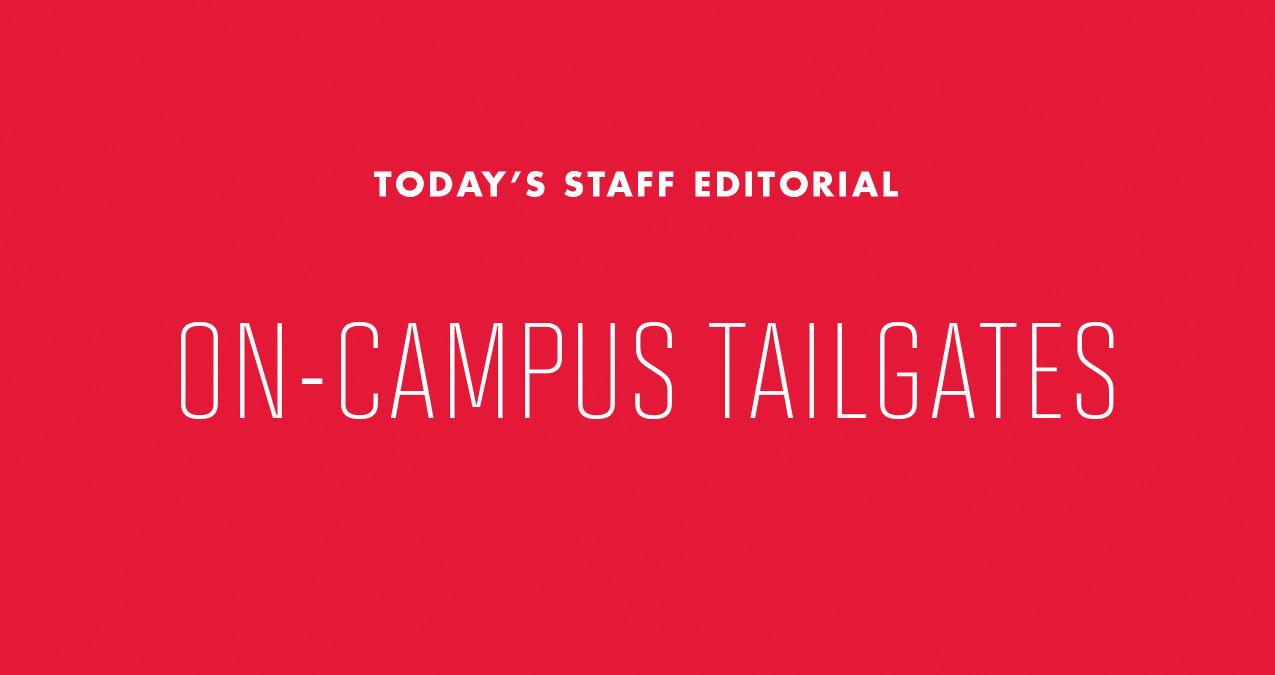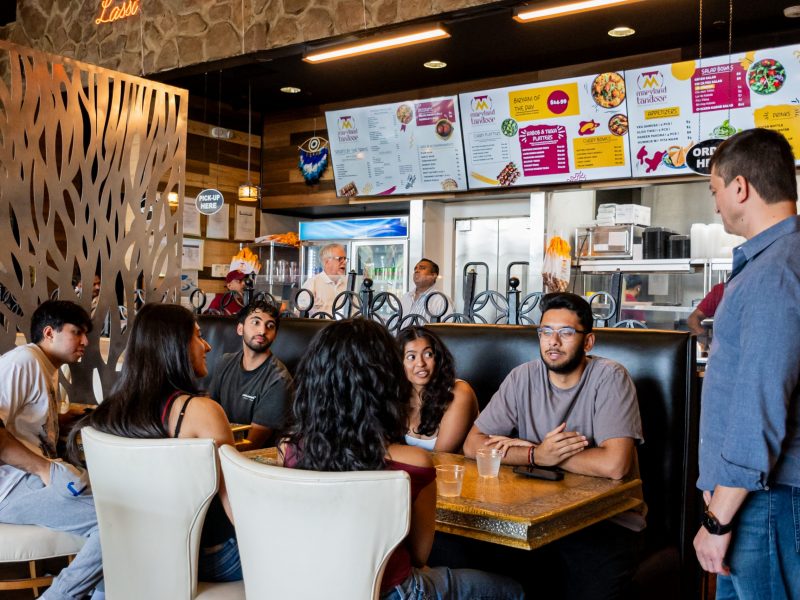
On-Campus Tailgate
Nothing guarantees demand quite like exclusivity, and on Saturday mornings, there’s no patch of real estate more exclusive than university President Wallace Loh’s front lawn.
September through late November, the lightly wooded turf behind Ludwig Field transforms into a space for university-sanctioned debauchery prior to Terrapins football home games, thanks to a joint tailgating effort between the Student Government Association and the Interfraternity Council first approved by administrators for the 2013 season.
As Department of Fraternity and Sorority Life Director Matt Supple noted in an interview with The Diamondback, these tailgates aren’t intended for everyone. Here’s a brief guest list:
Members of the two dozen or so IFC fraternities that bankroll the event with chapter dues. Members of any Panhellenic Association sororities that buck outdated national chapter restrictions on hosting events where alcohol is served.
Their plus-ones — and plus-twos and plus-threes, provided they’ve obtained passable photocopies of the venue’s official wristbands, handed out to hosting chapters during the week before each home game.
The wildly popular initiative, narrowly designed to reduce the number of kegs-and-eggs-style gatherings in College Park’s Old Town neighborhood in response to long-running resident complaints, has garnered praise from university and city officials alike. And since 2013, police have noted a sharp drop in the number of early-morning off-campus parties and noise complaints.
In the run-up to this past weekend’s game against Richmond, however, the buzz surrounding the morning tailgate nearly eclipsed the triumphant return of starting quarterback Perry Hills, back after two years spent riding the bench in the wake of an ACL tear. A taste of the intrigue (much of it half-truth or rumor): Fraternities were handing more wristbands out to potential new members and fewer to female attendees; police were cracking down harder on off-campus tailgates; security personnel were turning away students with photocopied wristbands; students were promising sexual favors in exchange for wristbands.
Students felt that invitations to the tailgates had grown harder to come by and wondered why event hosts couldn’t simply print more wristbands to accommodate the demand.
It’s a valid question, and the IFC’s then-vice president for external affairs told The Diamondback in 2013 that, if successful, the tailgates could grow. The IFC appears to have since changed its tune, but if other student groups want a sponsored space to tailgate and can gather the funds to offset additional security fees, the SGA should look into expanding the event.
As things stand, fire codes limit the number of students who may attend to fewer than 3,000, which would call for discussions with the fire marshal. If that dialogue falls through, students excluded from the IFC tailgates still have a number of viable drinking venues: on- or off-campus apartments and houses off Metzerott Road, among others.
But these are long-run concerns, and the tailgate has a much more pressing short-term issue.
Underage tailgaters can expect to waltz into the event with up to a dozen 12-ounce cans — a responsible limit on personal consumption, sure — and might as well leave their fake IDs at home. Event security won’t ask tailgaters to present proof of age unless they engage in “problematic behavior that involves alcohol,” Supple said, and a quick tug on students’ wristbands as they arrive at the field presents the only barrier to entry.
Even Route 1 watering holes notorious for admitting underage patrons make a conspicuous — if winking — effort to check driver’s licenses at the door, but some officials contacted this week by The Diamondback seemed apathetic that the university hasn’t taken steps to bar would-be underage drinkers from the on-campus tailgates.
That’s not particularly shocking; after all, the tailgates proved a fix-and-forget solution to off-campus gameday partying. But the Prince George’s Board of License Commissioners has planned a Byrd Stadium presence as the stadium begins selling alcohol this football season, and officials could amble over to Loh’s front yard and discover a venue for university-sponsored underage drinking — to the tune of $14,000 from the Student Affairs and Administration and Finance divisions.
That risk endangers what’s been the safest place for students to tailgate throughout the university’s recent history and one of the SGA’s most celebrated initiatives. The university, the SGA and the IFC need to decide if that risk is worth the reward.



